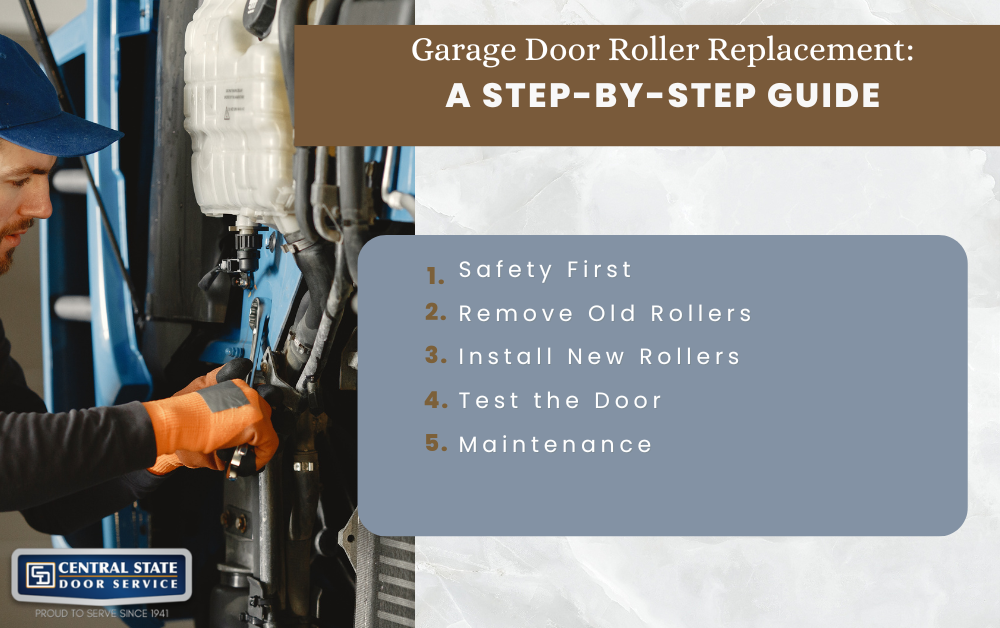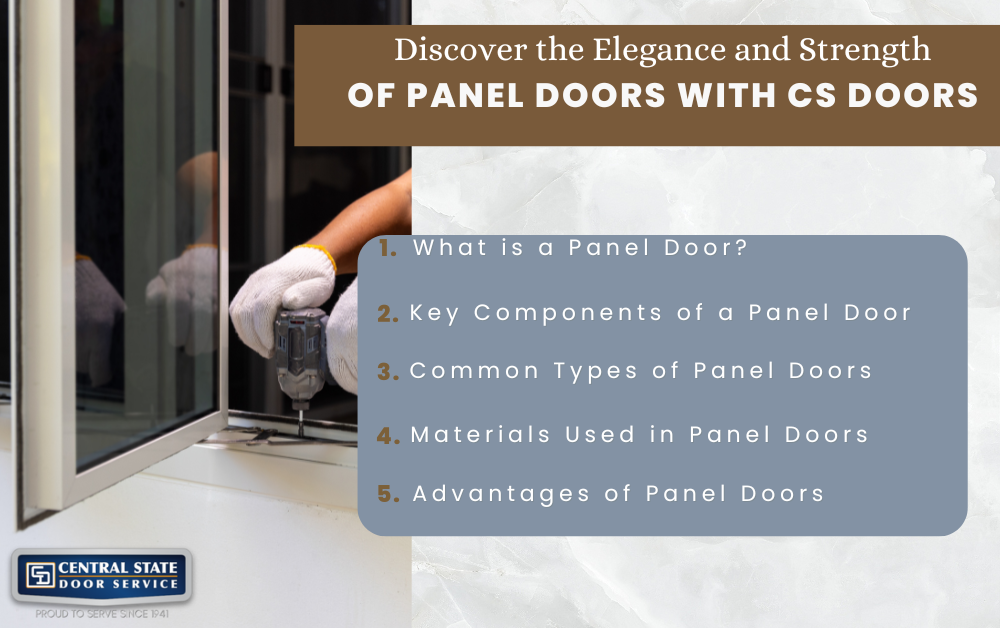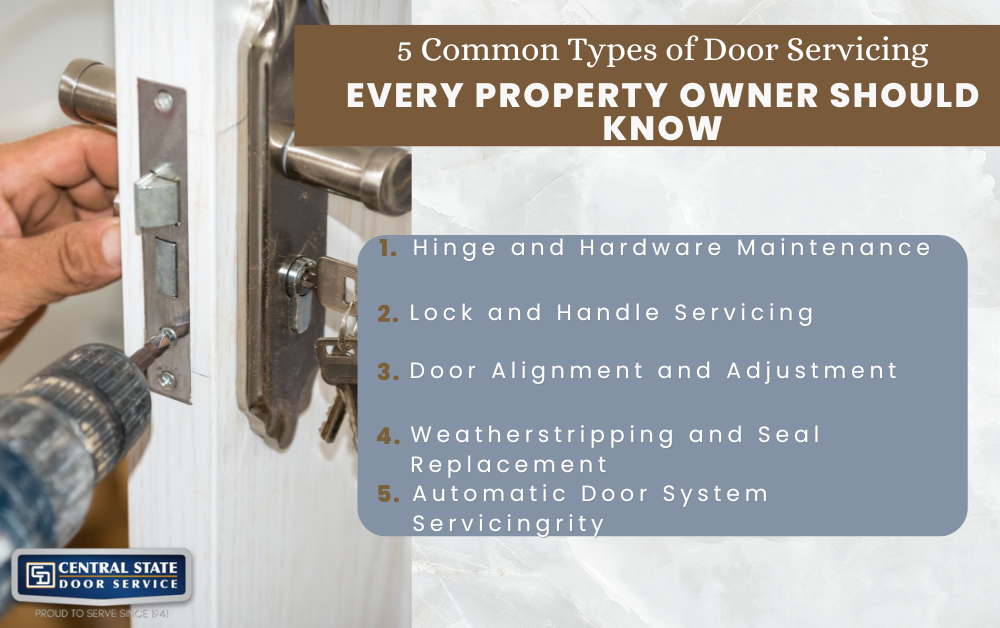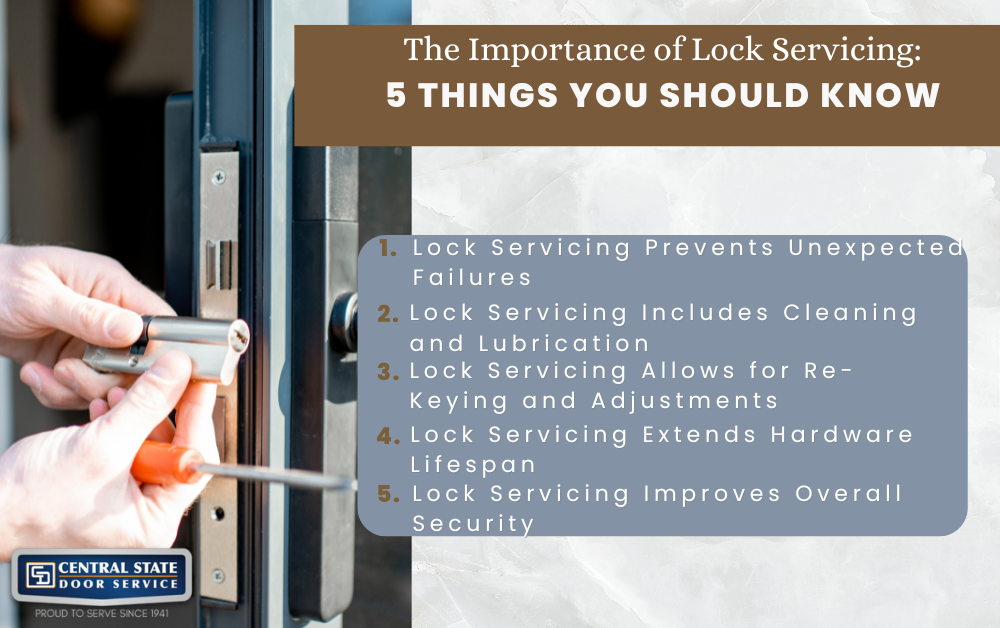Garage door roller replacement is an essential maintenance practice that can significantly enhance the functionality and longevity of your garage door system. With continued use, rollers may become damaged due to daily use, leading to noise and difficulty opening or closing the door. This wear and tear can strain other components, potentially developing into more severe problems if unattended. When you notice these signs, taking action with help from CS Doors before the situation worsens is essential. Replacing the rollers restores smooth operation while safeguarding against potential damage to other parts of your garage door system. In this blog, we’ll walk you through the essential steps involved in this process to help you tackle this task with confidence.
Safety First
Disconnecting the Garage Door Opener
Before beginning any garage door maintenance, safety should always be your top priority. First, shut down the garage door opener to avoid any unexpected movement while working on the door. This step is imperative for upholding your safety and the door’s integrity. Most garage door openers are designed with a release function that enables you to disengage the opener from the door, which is usually straightforward. Taking this precaution lets you focus on the replacement process without worrying about the door suddenly moving. Always remember that some preparation goes a long way in avoiding accidents, so never skip this step.
Securing the Door
Once disconnected, secure the door in the open position using a clamp or locking pliers. This ensures the door remains stable and won’t fall during the roller replacement process. An unstable door can pose serious safety risks, so taking the time to secure it is vital. Ensure that the clamps are firmly in place before proceeding to the next step to prevent accidents. You might also consider having a second person assist you during this process, especially if the door is heavy. This added security measure will give you peace of mind as you work and help ensure your safety.
Assessing Your Environment
Take a moment to assess your working environment before you begin. Ensure adequate lighting to see what you’re doing, as poor visibility can lead to mistakes. Having all the necessary tools within reach will make the process smoother and more efficient. Ensure your workspace is clear of any clutter that could obstruct your movement or cause distractions. A clutter-free workspace minimizes distractions and helps you focus on the task. Preparing your environment is essential in ensuring a successful roller replacement, allowing you to work efficiently and effectively.
Remove Old Rollers
Taking Out Roller Brackets
With safety measures in place, you can remove the old rollers. Begin by taking out the roller brackets that hold the rollers in place. Depending on how your system is set up, this process may involve using a screwdriver or wrench. Carefully removing these brackets is essential to avoid damaging the door, so take your time. You may encounter resistance if the brackets are rusted or corroded, so a bit of penetrating oil can help loosen them. Each component should be handled delicately to maintain the integrity of the garage door, which is vital for its overall performance.
Unscrewing and Unbolting
Depending on your garage door system, you may need to unscrew or unbolt specific components. This step emphasizes the need to pay close attention to detail to avoid accidental damage. As you work, keep track of all screws and bolts, placing them in a container to prevent losing them. This organization is crucial, as misplaced parts can delay the reassembly process and lead to frustration. Being methodical during this process will save you time later when reassembling the door, allowing you to focus on making necessary adjustments. Patience is key, so don’t rush through this critical stage of the replacement.
Sliding Out Old Rollers
Carefully slide out the old rollers from the tracks once the brackets are removed. Be mindful of any debris that may have accumulated in the area, as this can affect the new rollers’ performance. Scrutinize the tracks for any signs of damage or deterioration while at it, as this may also need attention. If the tracks are bent or damaged, you may need to straighten or replace them. Taking your time during this step will help ensure that no additional repairs are required later, leading to a smoother installation process. A thorough approach will make the installation of new rollers much more straightforward and effective.
Install New Rollers
Inserting New Rollers
Once the old rollers are removed, installing the new ones takes time. Start by inserting the new rollers into the tracks, ensuring they fit snugly and are aligned correctly. Appropriate alignment is necessary to effectively operate your garage door, as misaligned rollers can lead to issues down the line. To ensure optimal performance, take a moment to verify that the new rollers are compatible with your garage door system. If the rollers are misaligned, it could lead to further complications, such as increased wear or operational failure. A little attention to detail now will pay off in the long run, resulting in a more reliable garage door.
Reattaching Brackets
After placing the rollers, attach the brackets securely to ensure everything is in place. This step is critical for maintaining the stability and functionality of your garage door. Make sure to tighten screws and bolts adequately without overdoing it, which could cause damage. You should also double-check that all components are correctly fastened to avoid future issues. A well-secured system will operate more efficiently and extend the life of your new rollers. Completing this step correctly sets the foundation for the final adjustments, so don’t rush through it.
Final Adjustments
Once everything is reattached, adjust the brackets or rollers to ensure optimal alignment. This thoroughness can significantly affect the door’s operation, as a well-aligned door will glide smoothly along the tracks. After adjustments, ensure the rollers can move freely without obstruction, which is key to avoiding future problems. If the rollers encounter resistance during operation, it may indicate misalignment or obstruction that needs addressing. Taking the time to fine-tune your installation is integral to ensuring that your garage door functions effectively.
Test the Door
Manual Operation
After installing the new rollers, testing the door is essential to guarantee everything is in good working order. Manually open and close the garage door several times, paying attention to how it moves along the tracks. A smooth operation indicates the installation was successful, while any jerking or resistance may indicate an issue. If you notice any irregularities, addressing them immediately is crucial to avoid more serious problems later on. Testing the door is a critical step that should not be overlooked, as it allows you to confirm that the garage door roller replacement has positively impacted performance.
Listening for Noises
As you test the door, listen for any unusual noises that may arise during the operation. A properly functioning door should glide effortlessly along the tracks without grinding or squeaking sounds. If you hear anything out of the ordinary, it may signal that adjustments are needed. Sometimes, slight noises can be attributed to new rollers settling in, but consistent or loud sounds should be investigated. Managing these noises quickly can prevent further complications down the line. Paying attention to these details will enhance the longevity of your garage door and ensure that it operates smoothly.
Evaluating Performance
If the door operates smoothly without issues, your garage door roller replacement was successful. If not, take the time to recheck your installation to identify any potential problems, as even minor adjustments can make a significant difference. Sometimes, a simple realignment of the rollers can resolve performance issues. A meticulous evaluation is required to verify that you can enjoy the benefits of your new rollers for a long time. This last measure is critical for protecting your garage door’s function at its best and meeting your expectations.
Maintenance
Regular Inspections
Periodic upkeep is essential for preserving the life of your new rollers. Schedule periodic checks to inspect the rollers and tracks for signs of wear and tear. During these inspections, look for rust, cracks, or any irregularities affecting operation. Detecting any potential problems prematurely can save you from more significant repairs in the future, reducing costs and downtime. A bold approach to upkeep is key to keeping your garage door functioning smoothly. By committing to these regular inspections, you’ll be better prepared to handle issues before they escalate.
Lubrication
Lubricating the rollers and tracks is another critical aspect of garage door roller replacement maintenance. Regular lubrication reduces friction and noise, allowing the door to operate smoothly. A silicone-based lubricant is advisable for the best results, as it can withstand temperature changes better than others. Adding lubricant to the rollers and tracks can also help contain rust and corrosion, which are standard issues in garage door systems. A well-lubricated door enhances performance and extends the life of the rollers. Incorporating this lubrication routine into your maintenance schedule will pay off in the long run, ensuring reliable operation.
Proactive Steps
Taking proactive maintenance steps can prevent the need for frequent replacements, saving you time and money in the long run. Avoiding potential issues ensures that your garage door remains reliable and efficient. Maintaining a log for recording inspections and lubrication is advisable, noting any changes or repairs made. This can support your organization’s efforts and ensure no critical tasks are overlooked. Committing a little time to maintenance can bring about significant benefits, ultimately extending the lifespan of your garage door system and keeping it functioning optimally.
Conclusion
In conclusion, garage door roller replacement is a manageable task that can significantly improve your garage door’s performance. By carrying out these recommendations and valuing safety, you can achieve a smoother operation and extend the life of your garage door system. Regular maintenance and timely roller replacements are key to confirming that your garage door operates smoothly, efficiently, and effectively. If you encounter any challenges or have questions about the process, don’t hesitate to contact a professional for assistance. With the right approach and a commitment to maintenance, you can ensure that your garage door is performing at its best for years to come. Take action today and give your garage door the care it deserves with help from CS Doors!






